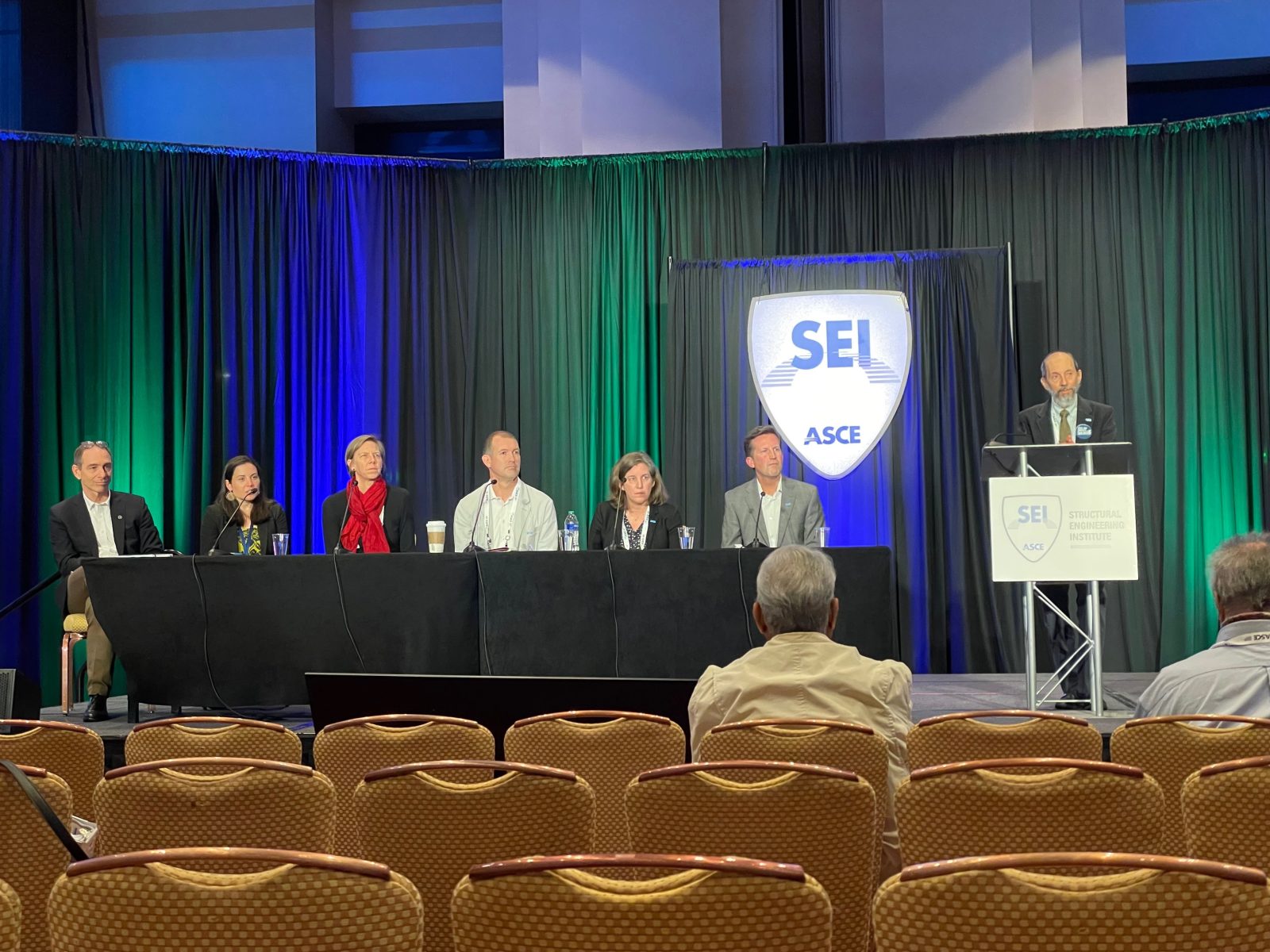SGH Releases 2022 Embodied Carbon Action Plan for SE 2050 Commitment

Simpson Gumpertz & Heger (SGH) recently released its 2022 Embodied Carbon Action Plan (ECAP) as part of the firm’s ongoing participation in the Structural Engineering Institute’s (SEI) SE 2050 Commitment program. SGH joined SE 2050 in 2021, pledging to work toward reducing embodied carbon in structural design projects to net zero by the year 2050. This is the second year that SGH has participated in the program and released an ECAP report.
“We made great progress in our first year with SE 2050,” said SGH Consulting Engineer Julia Hogroian, who serves as SGH’s Embodied Carbon Reduction Co-champion. “Over the last twelve months, we reported five projects to the SE 2050 database, presented on our commitment both internally and externally, shared educational resources with our staff members on embodied carbon and life-cycle assessments, and updated our specification and proposal templates to incorporate green strategies into our structural design projects.”

The 2022 ECAP shares updates and lessons learned from SGH’s first year in the program and outlines how the firm will continue to address SE 2050’s four action areas in the next year: Education, Reporting, Reduction, and Advocacy.
- Education: To make assessing and reducing embodied carbon a priority in engineering and administrative decisions, SGH will provide educational materials and seminars for all staff members, followed by regular learning opportunities to stay up to date on state-of-the-art practices.
- Reporting: SGH will track the embodied carbon on projects and contribute that data to the SE 2050 national embodied carbon database.
- Reduction: Using embodied carbon data and lessons learned from project experience, SGH will set internal embodied carbon reduction goals and develop strategies to meet these goals.
- Advocacy: SGH is committed to using multiple channels to spread the word both internally and externally about SE 2050 and the firm’s efforts in the program.
“We believe that climate change is an important issue and that our commitment to SE 2050 can help achieve our greater sustainability and corporate responsibility goals,” said SGH Senior Project Manager Michael Tecci, who also serves as an Embodied Carbon Reduction Co-champion. “We understand that a building’s structure, especially its steel and concrete elements, contributes to a large portion of its embodied carbon and we want to work towards improving this.”

We understand that a building’s structure, especially its steel and concrete elements, contributes to a large portion of its embodied carbon and we want to work towards improving this.